Featured
What to look out for when buying blue-green or teal sapphires
Blue green or teal sapphires have become a mainstream color for sapphires, especially among millennials for engagement rings. Choice Gems Co conducted a poll recently on its Instagram platform to find out which color of sapphire people preferred for their engagement ring, surprisingly the vote was split 50:50, blue vs teal. We are not surprised that teal is becoming the color of choice for sapphire engagement rings. Here are the reasons why we think teal is gaining popularity. Our opinion is based on data from our clientele needs and demands in the United States and from across the world.
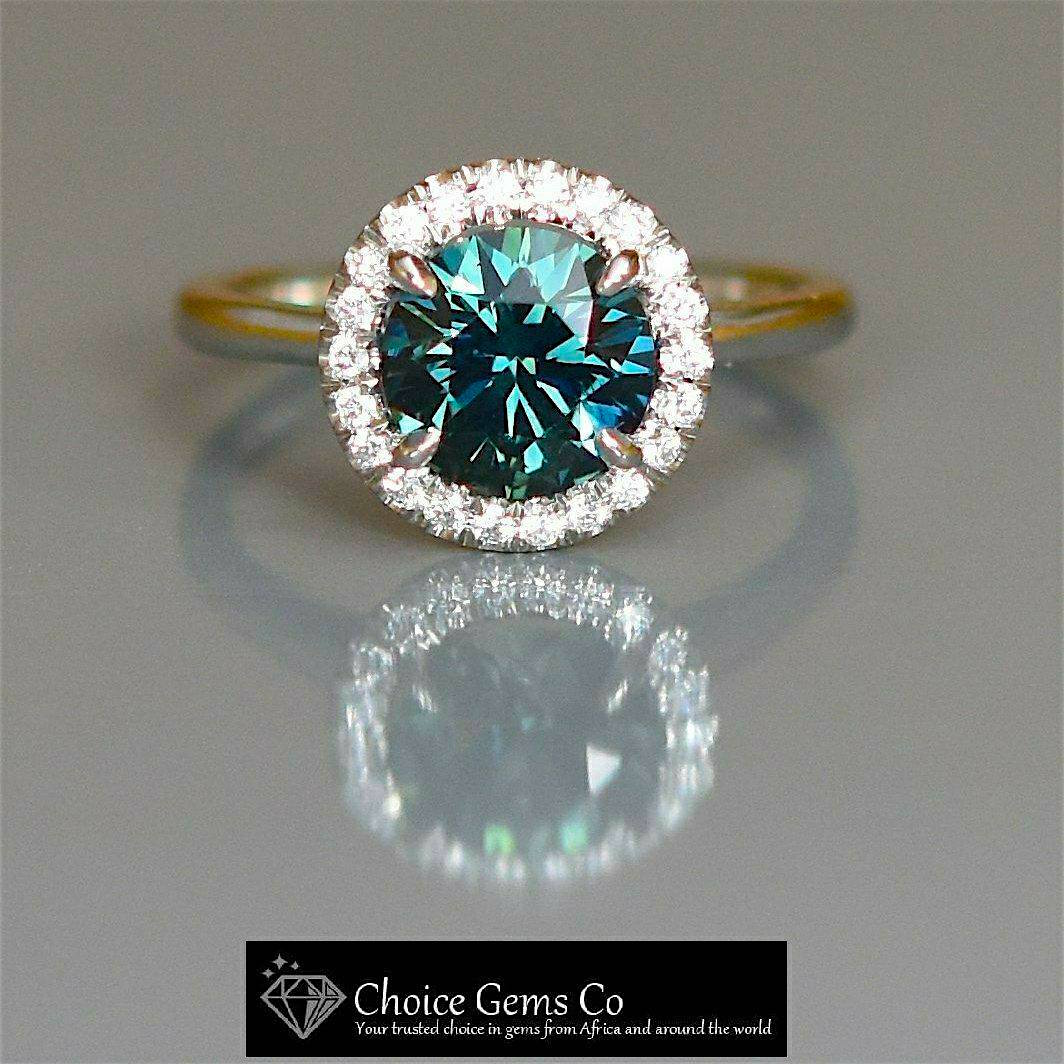
Why teal sapphire is making a comeback in engagement sapphires
-
Ocean
It is the color of the ocean. Many of our clients tell us that they love the teal sapphires because it resonates with the color of ocean.
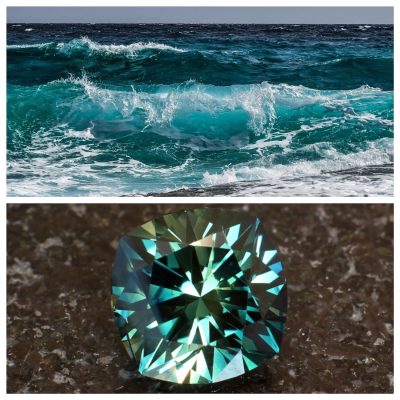
-
SeaHawks
In Seattle, where we are based, teal or blue-green is the color of the SeaHawks Football team, many Seattleites love this color for their jewelry. There are others who have similar colors for their favorite state sports team.
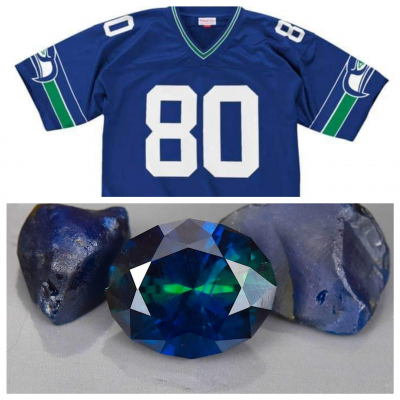
-
Ethically sourced
It represents ethically mined sapphires. Before the discovery of teal sapphires in other parts of the world, the US Montana Sapphire was a major source for the gem in the USA. Due to the strict mining regulations, US sapphires represented sort of an ideal ethically mined gem.This label resonated with a lot people that were moving away from diamonds with unknown or unverifiable sources. Similarly, other major sources for teal, such as Gombe in Nigeria, and Ilakaka in Madagascar are mined from family-owned and large scale artisanal mining, whose economic output is of immense economic benefit to small communities where the gems are sourced.
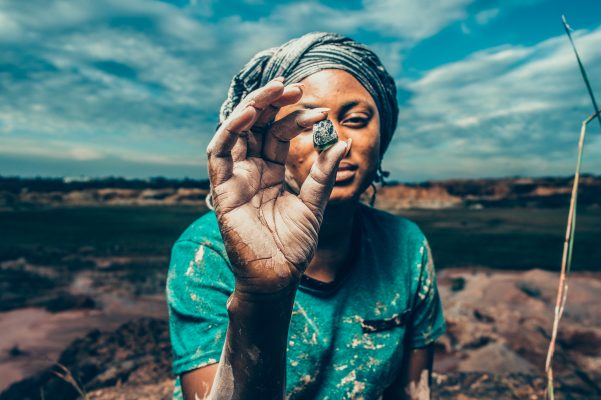
-
Affordable
Teal sapphires are not just beautiful but the cost way less than royal and cornflower blue sapphires. Sometimes as much as 50 – 60% less in price for a comparable size and quality. This is why we have noticed that millennials who are middle-income earners prefer to buy teal sapphire rings.
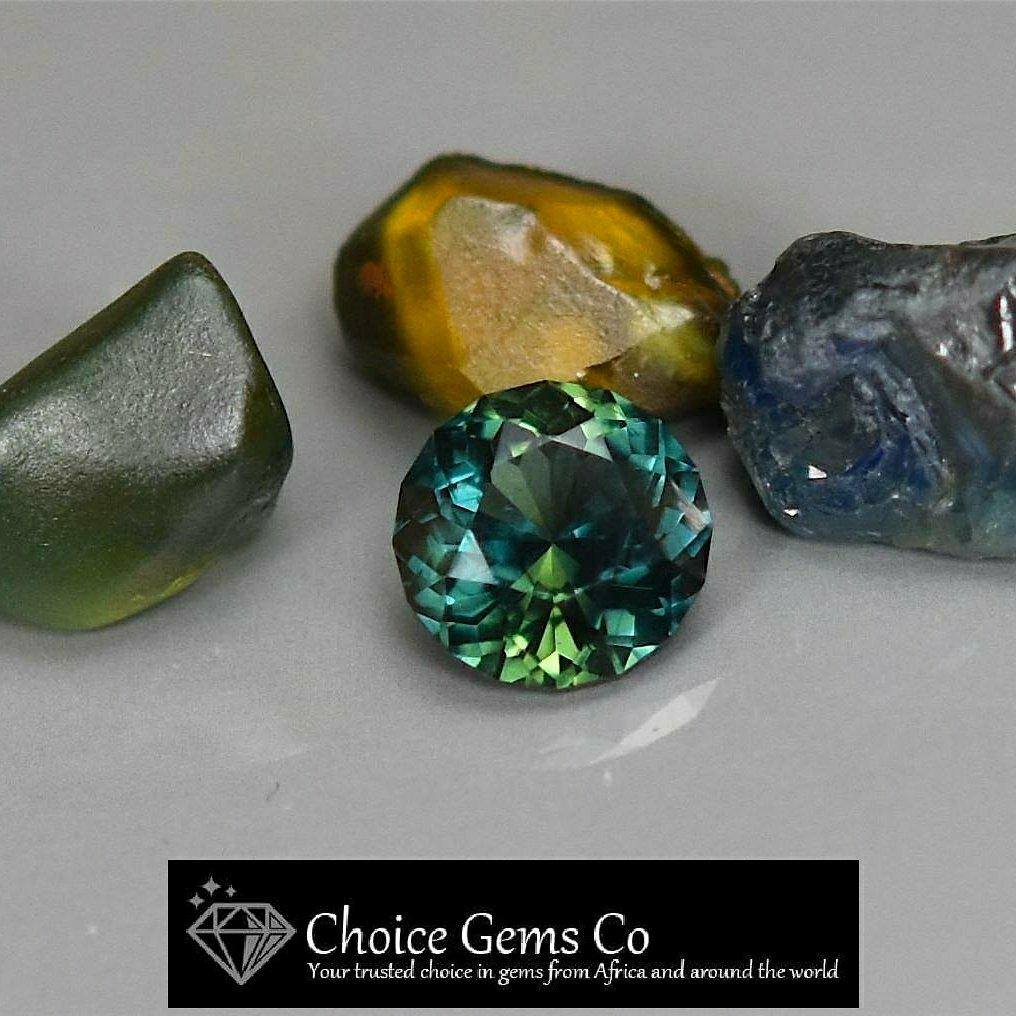
-
Beauty
Obviously, the teal sapphires are very beautiful. Wait till you see them on an engagement ring, they are absolutely gorgeous!
How to choose the perfect blue-green/teal sapphire
-
Color
The first and foremost thing you are looking out for in buying any gem including a sapphire is the color. The best way to judge color is in outdoor evening light, or a well lighted room from natural light. Once you are in the right setting, view the stone from about 1 feet above. The color you are looking out for is a deep sea color, or deep greenish-blue or bluish-green. You also want to examine the stone in different lights (daylight and florescent lightening), some teal sapphire shift colors to blue or green or in rare occasions purple, depending on the lightening. “Color changing” is not a common phenomena, if the stone changes completely to a different color in some lights, this might make it even more valuable. However, you must ensure that the primary color in most lightening conditions is teal. You can check out our Instagram page to see a range of teal colors.
-
Clarity
Just like any gemstone, you would want to see if the stone is free from any inclusions. Inclusions are anything (crystal, bubble, feather etc) that can be seen in the stone. Most unheated sapphires would have some level of “silk” inclusions. If you see anything in your stone easily with an unaided eye (without using lenses or loupes), and it distracts from the sparkle or beauty, you may want to reconsider your purchase or be prepared to pay a lower price, except you still like it. In certain instances inclusions add to beauty, but then you have to pay a lower amount relative to a comparable quality sapphire that is eye clean. If you need a jewelers loupe to see any inclusions, it means your stone is great! After all, none of your friends would be looking at your sapphire in 10x magnification, and sapphires rarely come in internally flawless grades!
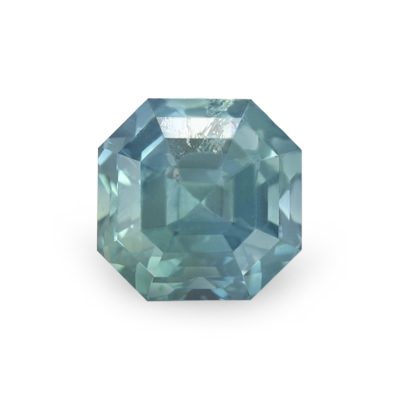
An included teal sapphire. Notice the visible inclusion at the top of the gem. -
Cut
As a lay person, you want to ensure that your stone is symmetrical. This means that if it is a round it is a symmetric round, likewise an oval or square. You also want to ensure that the sapphire has smooth surfaces (polish). You want to check how light bounces off the stone. If your stone has a lot of light “activity”, it is a plus. Stay away from stones that have large “windows”. Windows are clear spaces usually in the middle of the stone, where light does not bounce off the stone but rather is transmitted through the stone. This happens when a cutter primarily cuts to retain weight and not beauty, by doing this they ignore cutting below the “critical angle”(Every stone has a refractive index that is used to calculate the “critical angle”, and this has to be put into consideration when cutting to allow light bounce around the stone to reflect color and brilliance). You can get an expert to check this for you. Also, get an expert to check the meet points if you really care much about more about extra details. Except the “meet points” are too shabby, missing few meet points here and there won’t significantly distract much from the stone’s beauty.

A Precision cut sapphire. Notice how symmetrical it is and how light performance is optimized! -
Carat weight: This is solely dependent on what you really want. Typically, from our experience with clients, many of our clients tend to buy between 1.3 – 2.5 cts (6mm to 8.5mm) sapphires for their engagement rings. Those who want a statement ring are willing to spend over $5,000 go for between 3cts to 6 cts stones. This size range will definitely make you stand out from the crowd, because it is rare.
Are teal sapphires ethically sourced?
It depends on who carries it. For the most part, teal sapphires from Montana in the U.S. are ethically sourced. The limitation with Montana sapphires is the rarity of getting roughs that are above 5 cts to make 1.3 – 2.5cts finished gems. Sapphires from other parts of the world like Madagascar and Nigeria, are largely ethically sourced too, not in the strictest sense when you consider the context of the mining regulations as we have here in the United States. However, the mining operations in these countries are largely artisanal, and contributes significantly to the local economy of the source communities.
For Choice Gems Co, we source our teal sapphires from several locations in Nigeria. We have a buying office in Nigeria, and know the miners and their families personally. Our sapphires are devoid of any local conflicts, child labor or slavery. We also ensure that 10% of our profits goes into one community development project or the other in the regions where we get our stones.
How much does a teal sapphire cost?
The cost of a teal sapphire depends largely on the 4Cs like we mentioned above. It also depends on the vendor. For us at Choice Gems Co, we ensure that our stones are ethically sourced, traceable, and of exceptional quality. We put in a lot of effort to ensure our stones match up to the importance of engagements or a celebration of a wedding anniversary, or just a gift to a loved one. We work to ensure that whatever our teal sapphires are used for, it is memorable, long lasting and beautiful to the user. Here are our price guides to teal sapphires.
This price guide assumes the following:
- Cut is excellent – meaning, symmetry, meet points, polish and brilliance are all great, and meet standards in the industry.
- Color is medium toned blue-green, or green-blue or green with slight blue. This varies quite a bit, and the price will vary based on the color tone and hue
- Clarity is eye clean to internally flawless
- The price is adjusted for any deviation from optimal quality.
- Retail price (We offer wholesale pricing to jewelers and dealers through our newsletters and by working individually with the companies)
1 – 1.5 ct – $650 – $1,200/ct
2 – 3ct – $850 – $1,600/ct
3ct+ – It all depends on the size and other factors mentioned above. It goes anywhere between $1,000 – $2,500/carat
**PS: These prices are based on 2020 estimates (reviewed every year).**
We post sapphires regularly on our instagram page. Teal sapphire is a range of colors..what we post on Instagram is a good resource for the range of colors that are possible.

Hi,
Great post! We are in the process of getting a teal ring made. Should some type of certificate come with this sapphire?
The Real Person!
Author admin acts as a real person and passed all tests against spambots. Anti-Spam by CleanTalk.
Thank you, Meghan! If you ever doubt your sapphire is natural, or you want to know if there have been any treatments don the gem, it is always best to check with a reputable laboratory, regardless of the worth of the sapphire. A cert does two things:
1. Makes you confident of what you have
2. Good document for insurance or resale purposes.
That said, if you trust the company that sold the sapphire to you, then it is advisable to appraise the ring for insurance purposes, as opposed to getting a certificate the gemstone. Part of an appraisal process is the identification of the gemstone.
At Choice Gems Co, we only send stones for certification when it is above $3,000, except the client specifically request for it.